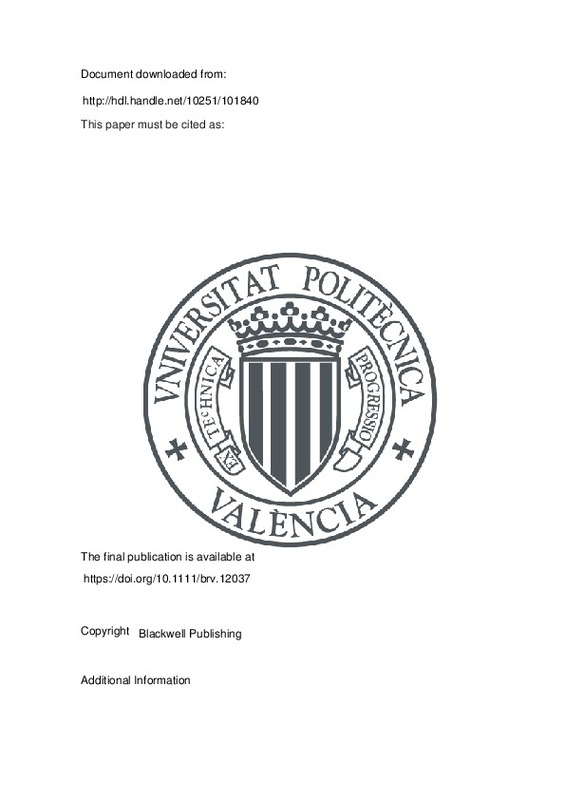JavaScript is disabled for your browser. Some features of this site may not work without it.
Buscar en RiuNet
Listar
Mi cuenta
Estadísticas
Ayuda RiuNet
Admin. UPV
Chaperonin 60: a paradoxical, evolutionarily conserved protein family with multiple moonlighting functions
Mostrar el registro sencillo del ítem
Ficheros en el ítem
| dc.contributor.author | Henderson, Brian
|
es_ES |
| dc.contributor.author | Fares Riaño, Mario Ali
|
es_ES |
| dc.contributor.author | Lund, Peter A.
|
es_ES |
| dc.date.accessioned | 2018-05-13T04:22:10Z | |
| dc.date.available | 2018-05-13T04:22:10Z | |
| dc.date.issued | 2013 | es_ES |
| dc.identifier.uri | http://hdl.handle.net/10251/101840 | |
| dc.description.abstract | [EN] Chaperonin 60 is the prototypic molecular chaperone, an essential protein in eukaryotes and prokaryotes, whose sequence conservation provides an excellent basis for phylogenetic analysis. Escherichia coli chaperonin 60 (GroEL), the prototype of this family of proteins, has an established oligomeric-structure-based folding mechanism and a defined population of folding partners. However, there is a growing number of examples of chaperonin 60 proteins whose crystal structures and oligomeric composition are at variance with GroEL, suggesting that additional complexities in the protein-folding function of this protein should be expected. In addition, many organisms have multiple chaperonin 60 proteins, some of which have lost their protein-folding ability. It is emerging that this highly conserved protein has evolved a bewildering variety of additional biological functions ¿ known as moonlighting functions ¿ both within the cell and in the extracellular milieu. Indeed, in some organisms, it is these moonlighting functions that have been left after the loss of the protein-folding activity. This highlights the major paradox in the biology of chaperonin 60. This article reviews the relationship between the folding and non-folding (moonlighting) activities of the chaperonin 60 family and discusses current knowledge on their molecular evolution focusing on protein domains involved in the non-folding chaperonin functions in an attempt to understand the emerging biology of this evolutionarily ancient protein family. | es_ES |
| dc.language | Inglés | es_ES |
| dc.publisher | Blackwell Publishing | es_ES |
| dc.relation.ispartof | Biological Reviews of the Cambridge Philosophical Society (Online) | es_ES |
| dc.rights | Reserva de todos los derechos | es_ES |
| dc.subject | Chaperonin 60 | es_ES |
| dc.subject | Heat shock response | es_ES |
| dc.subject | Protein folding | es_ES |
| dc.subject | Protein moonlighting | es_ES |
| dc.subject | Paralogues | es_ES |
| dc.subject | Protein evolution | es_ES |
| dc.title | Chaperonin 60: a paradoxical, evolutionarily conserved protein family with multiple moonlighting functions | es_ES |
| dc.type | Artículo | es_ES |
| dc.identifier.doi | 10.1111/brv.12037 | es_ES |
| dc.rights.accessRights | Abierto | es_ES |
| dc.contributor.affiliation | Universitat Politècnica de València. Instituto Universitario Mixto de Biología Molecular y Celular de Plantas - Institut Universitari Mixt de Biologia Molecular i Cel·lular de Plantes | es_ES |
| dc.description.bibliographicCitation | Henderson, B.; Fares Riaño, MA.; Lund, PA. (2013). Chaperonin 60: a paradoxical, evolutionarily conserved protein family with multiple moonlighting functions. Biological Reviews of the Cambridge Philosophical Society (Online). 88(4):955-987. doi:10.1111/brv.12037 | es_ES |
| dc.description.accrualMethod | S | es_ES |
| dc.relation.publisherversion | https://doi.org/10.1111/brv.12037 | es_ES |
| dc.description.upvformatpinicio | 955 | es_ES |
| dc.description.upvformatpfin | 987 | es_ES |
| dc.type.version | info:eu-repo/semantics/publishedVersion | es_ES |
| dc.description.volume | 88 | es_ES |
| dc.description.issue | 4 | es_ES |
| dc.identifier.eissn | 1469-185X | es_ES |
| dc.relation.pasarela | S\259272 | es_ES |







![[Cerrado]](/themes/UPV/images/candado.png)

